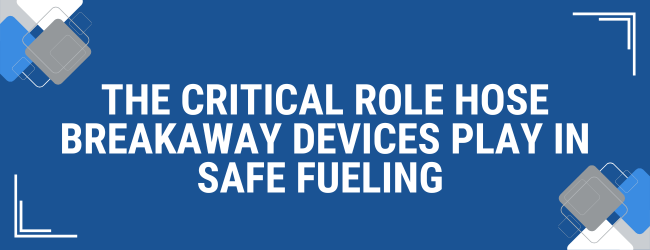
In today's fast‐paced retail fueling industry, gas station repair is more than just fixing leaks or pumps — it's about ensuring safety, compliance, environmental protection, and minimizing downtime. A critical yet often underestimated piece of fueling equipment is the breakaway device on dispensing hoses—typically unnoticed until a sudden mishap brings it into focus. These devices are designed to separate cleanly when a vehicle drives off with the nozzle still inserted, protecting dispensers, hoses, piping, and the environment from catastrophic fuel spills.
Breakaway devices serve as sacrificial safety valves. When unexpected tension is applied—such as a drive‐off—they separate at a designated pull force. Upon separation, dual internal valves automatically seat and shut off fuel flow on both sides, dramatically reducing the risk of leaks, dispenser damage, and environmental contamination. That makes them invaluable for gas station repair teams responding to emergencies or carrying out regular maintenance.
There are two main categories of breakaways: single‐use (non‑reconnectable) and reconnectable. Understanding the differences is vital for fuel site operators, maintenance teams, and public safety officials. OPW—an industry leader—offers both types (notably the OPW66V single‑use series, and the OPW66REC and 68EZR reconnectable models), which are widely used across retail fueling networks.
OPW Single‑Use Breakaways (e.g., the 66V Series) are engineered to separate once under force and must then be replaced. Here's what sets them apart:
Single-use models are especially favored in high-volume or remote stations, where ensuring a fresh breakaway every time reduces long-term liability in gas station repair.
OPW Reconnectable Breakaways, including models like the 66REC and 68EZR, offer a different approach:
Can be reconnected on site: After separation, the halves can be pushed, twisted, and clicked back together, restoring operation in just minutes without the need to replace the unit.
Reconnectable models are an excellent choice for high‑rotation forecourts where service speed and uptime are priorities in gas station repair.
When comparing single-use and reconnectable breakaways, several key factors come into play. In terms of operational downtime, single-use breakaways can leave dispensers out of service for hours while waiting for replacement parts, whereas reconnectable breakaways often allow stations to resume service within minutes after a proper reconnection. Cost and inventory management also differ: single-use models require stocking replacement units, while reconnectable ones eliminate the need for full replacements—though seals like O-rings may occasionally need to be changed. From a safety and compliance standpoint, single-use breakaways provide a fresh unit after every incident, reducing the risk of human error. Reconnectable models, however, rely on proper reconnection using the approved push-twist-click method and visible green indicator to ensure system integrity. Environmentally, single-use units generate more waste with each separation, while reconnectables are more sustainable, needing only minor component replacements. Lastly, application fit matters—single-use breakaways work well at remote or low-traffic sites where simple replacement is feasible, while reconnectable models are better suited for high-traffic locations where trained personnel can quickly and safely restore service.
Breakaway devices are crucial to effective gas station repair, enabling safer operations, reducing fuel spills, minimizing cleanup costs, and minimizing downtime. OPW's single-use 66V Series delivers reliable one-time protection, while the 66REC and 68EZR reconnectable models provide flexible and rapid service restoration. Both types feature a robust dual-valve shut-off design and UL/ULC approvals for modern fuels.
Selecting and maintaining the right breakaway device is a smart move for gas station operators, service technicians, and safety managers who are focused on operational continuity, environmental responsibility, and regulatory compliance.
We Keep You Pumping!
--
PumpTex, Inc. was founded in 1997 in the back of a garage with the dream of bringing a new level of customer service to the retail petroleum service industry. Over the years, we have grown to become a valuable resource to our customers. Many consider us to be the first responders of the retail petroleum service industry!
888-906-PUMP (7867)It's time to bring a new level of customer service to the retail petroleum service industry.
We search for the “WOW” moment in each and every customer interaction. Our team is known in the industry to have the best customer service and follow-up in our industry.
As a team, we also work intelligently to provide a valuable and tailored experience to each of our customers. We derive a great sense of pride from engaging our customers in a professional relationship.
Any client, vendor or media provider interacting with PumpTex discerns that our unique culture and operating practices separate us from our competitors and are drawn to our way of doing business.
We offer real-time solutions to the problems our clients experience. Being a resource to our customers and becoming their eyes and ears in the field enables them to maximize uptime and profits.